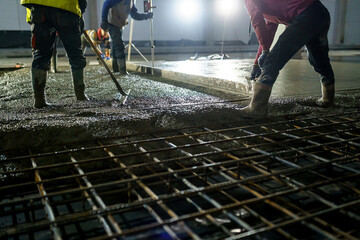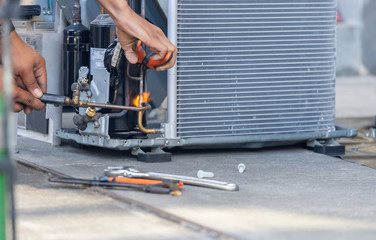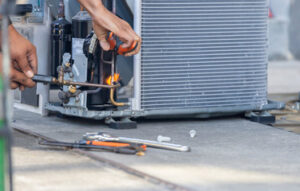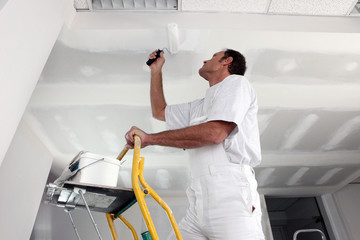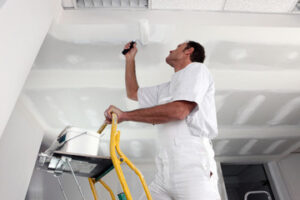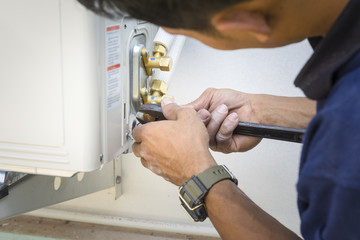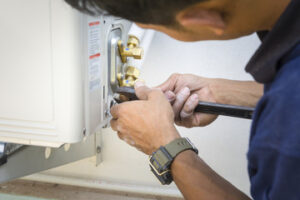Concrete Contractors play a crucial role in the construction industry. Their work shapes the foundation of buildings, roads, and infrastructure. The quality of concrete work impacts the safety and longevity of structures. Skilled contractors combine expertise with modern techniques to meet evolving demands.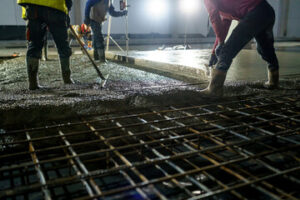
The concrete industry has seen significant advancements in recent years. New materials and additives have improved strength and durability. Contractors now use fiber-reinforced concrete for added crack resistance. This enhances the performance of both residential and commercial structures.
Decorative concrete has become increasingly popular in modern design. Stamped and stained finishes offer aesthetic appeal and durability. Contractors can replicate the look of natural stone, wood, or brick. This allows for customized designs without sacrificing strength.
Concrete resurfacing has become a cost-effective solution for aging structures. Contractors apply overlays and coatings to restore worn surfaces. This extends the lifespan of concrete without full replacement. Proper resurfacing improves appearance and structural integrity.
Polished concrete floors have gained popularity for their sleek finish and low maintenance. Contractors use grinding and polishing equipment to create a smooth surface. The process enhances durability and resistance to stains. Polished floors are ideal for high-traffic areas.
Precast concrete has simplified construction timelines and reduced labor costs. Contractors manufacture precast components off-site and assemble them on location. This reduces on-site work and minimizes construction waste. Precast elements improve consistency and structural performance.
Advanced curing methods have improved concrete strength and finish. Contractors use water retention blankets and vapor barriers for even curing. Proper curing reduces cracking and surface defects. Enhanced curing methods increase long-term durability.
Concrete contractors now incorporate environmental considerations into their work. Recycled aggregates and low-carbon cement reduce environmental impact. Contractors mix concrete to achieve strength with minimal resource use. Sustainable practices align with modern construction standards.
Self-healing concrete has emerged as a groundbreaking development. Microorganisms and special additives repair cracks automatically. This reduces maintenance needs and extends concrete lifespan. Contractors are adopting self-healing concrete for critical infrastructure projects.
Concrete formwork technology has improved construction precision and speed. Contractors use reusable plastic and metal forms for consistent shaping. Modern formwork systems allow for complex designs and quick assembly. Enhanced formwork improves structural accuracy and finish quality.
Shotcrete has become a preferred method for curved and vertical surfaces. Contractors spray concrete onto surfaces using high-pressure equipment. This allows for rapid application and strong adhesion. Shotcrete is commonly used for tunnels, retaining walls, and swimming pools.
Concrete pumping has increased efficiency in large-scale projects. Contractors use specialized equipment to transport concrete to hard-to-reach areas. This reduces labor requirements and improves pouring accuracy. Pumping allows for faster completion of high-rise structures.
High-performance concrete mixes have expanded the possibilities for modern construction. Contractors adjust the mix ratio to achieve desired strength and flexibility. Specialized additives improve resistance to environmental stress. High-performance concrete supports complex architectural designs.
Concrete stamping techniques have added versatility to exterior surfaces. Contractors create textured finishes that mimic natural materials. Stamped concrete combines aesthetic value with durability. This enhances the appeal of driveways, patios, and walkways.
Insulated concrete forms (ICFs) have improved energy efficiency in construction. Contractors use foam block systems to create insulated walls. ICFs provide thermal resistance and soundproofing. This reduces energy costs and enhances indoor comfort.
Concrete contractors face unique challenges in harsh weather conditions. Freezing temperatures and moisture affect curing and strength. Contractors use protective coverings and heating systems to maintain quality. Proper weather management prevents surface defects and structural failure.
Waterproof concrete has improved the performance of underground structures. Contractors add waterproofing agents to the concrete mix. This prevents water infiltration and damage. Waterproof concrete is essential for basements, tunnels, and retaining walls.
Reinforced concrete remains a critical component of modern construction. Contractors embed steel rebar or mesh to increase tensile strength. Proper reinforcement prevents cracking and structural failure. Reinforced concrete supports bridges, skyscrapers, and large infrastructure projects.
Concrete cutting and coring require specialized equipment and expertise. Contractors use diamond-tipped saws and core drills for precise openings. Accurate cutting supports plumbing, electrical, and ventilation systems. Clean cuts maintain structural integrity and finish quality.
Colored concrete has expanded design options for residential and commercial projects. Contractors use integral pigments and surface dyes for lasting color. This creates unique design possibilities without compromising strength. Colored concrete resists fading and weather damage.
Concrete overlay systems have provided new life to aging surfaces. Contractors apply thin layers of polymer-modified concrete. Overlays improve surface appearance and performance. This approach reduces replacement costs and extends surface lifespan.
Concrete jointing techniques prevent uncontrolled cracking. Contractors cut control joints at strategic points during curing. Proper jointing allows for natural expansion and contraction. This maintains structural integrity and surface appearance.
Tilt-up concrete construction has streamlined large-scale building projects. Contractors pour concrete panels on-site and lift them into place. This reduces construction time and labor costs. Tilt-up methods enhance structural consistency and load-bearing capacity.
Lightweight concrete has increased flexibility in design and construction. Contractors use lightweight aggregates to reduce density without sacrificing strength. Lightweight concrete improves thermal performance and seismic resistance. This supports innovative architectural designs.
Permeable concrete has improved stormwater management in urban areas. Contractors install porous surfaces that allow water to drain through. This reduces runoff and supports groundwater recharge. Permeable concrete improves drainage and prevents flooding.
Concrete repair and restoration require technical expertise and precision. Contractors assess cracks, spalling, and surface defects. Epoxy injections and surface treatments restore strength and appearance. Proper repair techniques extend the lifespan of concrete structures.
Concrete reinforcement fibers have improved strength and flexibility. Contractors add synthetic or steel fibers to the mix. This enhances resistance to cracking and impact damage. Fiber-reinforced concrete supports heavy traffic and extreme weather conditions.
High-strength concrete mixes have supported the development of taller and more complex structures. Contractors adjust curing times and temperature conditions. Proper handling ensures consistent strength and finish quality. High-strength concrete withstands environmental and structural stress.
Concrete contractors are adopting 3D printing technology for custom structures. Large-scale printers create complex concrete forms with precision. This reduces material waste and labor costs. 3D printing expands the possibilities for architectural design.
Concrete demolition and removal require careful planning and execution. Contractors use hydraulic breakers and cutting tools for safe removal. Proper disposal of concrete debris reduces environmental impact. Recycled concrete can be used in future construction projects.
Fiber-reinforced concrete has enhanced the performance of load-bearing structures. Contractors mix steel, glass, or synthetic fibers into the concrete. This improves tensile strength and crack resistance. Fiber-reinforced concrete supports bridges, highways, and industrial floors.
Thermal mass properties of concrete have improved building energy efficiency. Contractors design structures to absorb and retain heat. This reduces heating and cooling costs. Thermal mass enhances indoor comfort and reduces energy consumption.
Concrete surface sealing has improved resistance to stains and weather damage. Contractors apply acrylic, epoxy, or polyurethane sealers. Proper sealing extends the lifespan of driveways, patios, and floors. Sealed surfaces maintain color and texture over time.
Concrete lifting and leveling have reduced the need for full replacement. Contractors use polyurethane foam or mudjacking techniques. This raises and stabilizes sunken concrete surfaces. Lifting and leveling restore safety and appearance without major disruption.
High-performance concrete coatings have improved surface durability. Contractors apply resin-based coatings for added strength and protection. Coated surfaces resist abrasion, chemicals, and moisture. Coatings enhance the lifespan and appearance of concrete.
Concrete contractors remain essential to modern infrastructure and architectural design. Their expertise ensures strong foundations and lasting performance. Advances in materials and techniques have expanded the possibilities for concrete construction. Skilled contractors combine craftsmanship with innovation to meet evolving demands.

